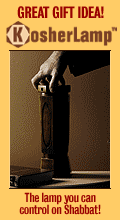
| |||
The Guide to Surge Protectors (Page 3)By: Jonathan Z. Kremer What to look for when buying. As with just about everything, there is a high end and a low end to surge protectors, and you typically get what you pay for. Low-end surge protection units offer very little protection, and the circuits in the protector are prone to quick failure. So how do you know what to look for? The following are some specifications to look for when shopping for Point-of-Use Surge Protectors: Choose only those surge protectors that have been tested: UL 1449 2nd Edition is a test standard (USA) that was developed by UL (Underwriters Laboratory) in conjunction with the industry, to certify product ratings and ensure proper markings on TVSS products. Through this test, the clamping voltage is determined. For other test standards see "Important note #4" below. Clamping Voltage (Rating): Purchase surge protector with a listed clamping voltage of 330-volts, the best rating given under UL 1449. It will not be difficult to find TVSSs that plug into outlets and have a clamping voltage of 330-volts. Let Through Voltage (Rating): This is the amount of voltage that passes through the surge protector to your devices (see above). Try to get a surge protector with the lowest possible "let through voltage" rating. Joule rating: A joule is a measurement of energy. The joule rating on a surge protector shows the amount of energy that a device is capable of absorbing. Some say that the higher the joule rating, the better the unit is able to protect your equipment and the longer it will last. Most do not agree. IEEE, IEC, and NEMA do not recommend using joules ratings when comparing surge devices because they can provide misleading and conflicting information. One device may have a lower joule rating than another, but may have a much lower let-through voltage and therefore offer better protection. 3-Line protection: Make sure the surge protection is on all 3 electrical lines. The device should indicate protection for Line to Neutral (L-N), Line to Ground (L-G), and Neutral to Ground (N-G). Power shut down protection: This feature shuts off power to all outlets once the unit has reached its capacity to protect. Power shut down prevents additional surges and spikes from reaching connected equipment before the surge protector is replaced. This assures you that if the unit has power, it is protecting.
|
|||
|
Circuit breaker: A breaker stops the flow of electricity when a circuit is overloaded and is not related to surges or spikes. Diagnostic lights: Diagnostic lights are very helpful in monitoring the effectiveness of the surge protector. For instance, a ground indicator light displays whether or not the device is properly grounded — crucial knowledge, because you will not be protected if it isn't. Telephone and Coax Protection: Look for a surge protector with telephone and coax cable jacks for protection of those lines. Remember, power surges can enter through the electrical, telephone, or coax lines. Response time: This rating indicates how fast a surge protector can react. The faster the better. Good Warranty: Find an established manufacturer with a good reputation. Their warranty should cover any damage to the equipment that is connected through their surge protection device. Service entrance surge protection devices will either be a TVSS or a secondary surge arrester. It is not possible to compare the capabilities of the two because they are tested differently. The following are some specifications to look for when shopping for Service Entrance Surge Protection: Make sure the device has been tested: It is very important that the device has been tested. For those manufactured or sold in the USA look for a secondary surge arrester that is tested according to the recommendations of IEEE C62.11 or a TVSS that has been tested in accordance with UL 1449, 2nd Edition. Fuse Protection: Look for a TVSS device that has thermal fuse protection. If the device is a secondary surge arrester, make sure it is fused. Clamping Voltage (Rating): It was mentioned in the section above that the best rating given under UL 1449 is 330 volts. Service entrance TVSS surge protectors will typically have a clamping voltage higher than 330 volts. The lower the clamping voltage the better the protection. Those service entrance surge protection devices classified as secondary surge arresters will not have a clamping voltage because they are not tested to UL 1449 standards. Therefore you should get a device that is tested according to the recommendations of IEEE C62.11. Talk with the manufacturer about the device's capabilities. Since there is no standardized test method for secondary surge arresters, each manufacturer may test their product differently, making a performance comparison between products difficult or impossible. Joule rating: The joule rating on a surge protector shows the amount of energy that a device is capable of absorbing. Telephone and Cable TV Protection: Install surge protection on the telephone and cable TV lines as well as the electrical line. This can be accomplished either with one surge protection device or seperate devices for each utility line. 3-Line protection: Make sure the surge protection is on all 3 electrical lines. The device should indicate protection for Line to Neutral (L-N), Line to Ground (L-G), and Neutral to Ground (N-G). Working Indicator Light: Most all service entrance surge protection devices have indicator lights that will signify if there are any problems with the protection. Good Warranty: Find an established manufacturer with a good reputation.
|


